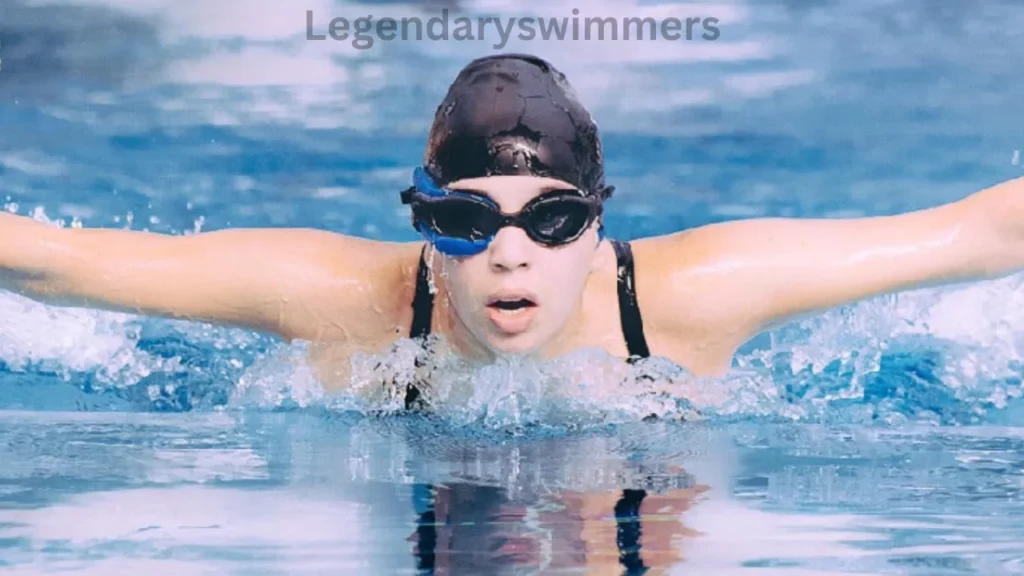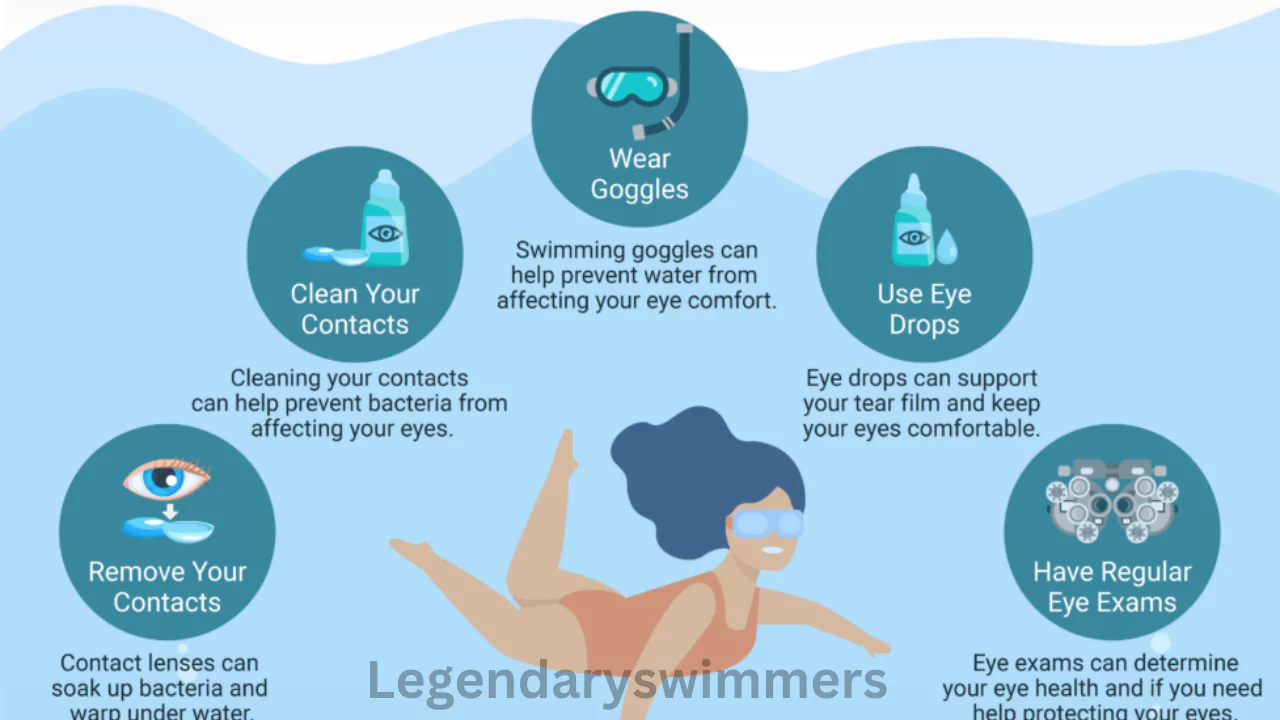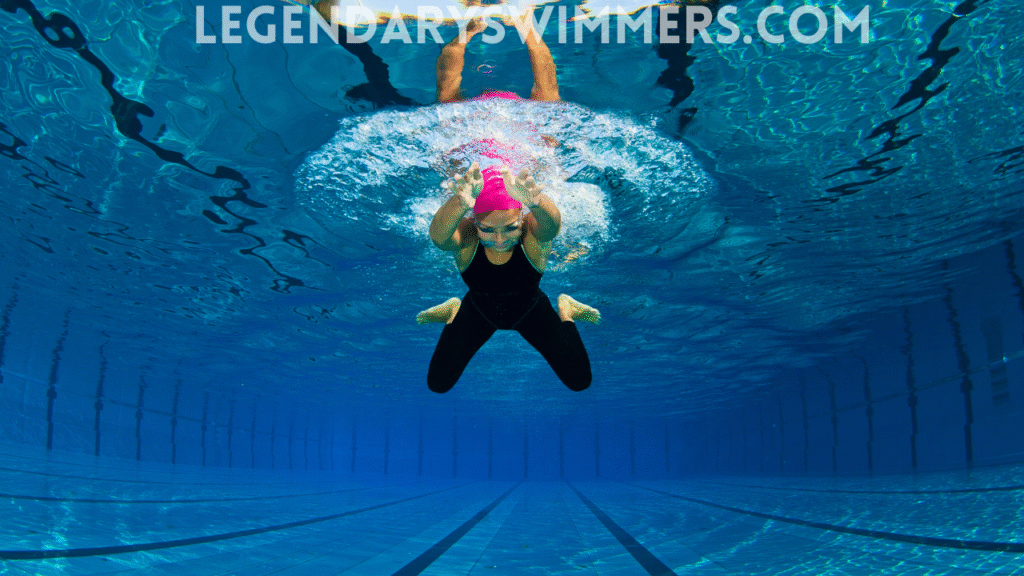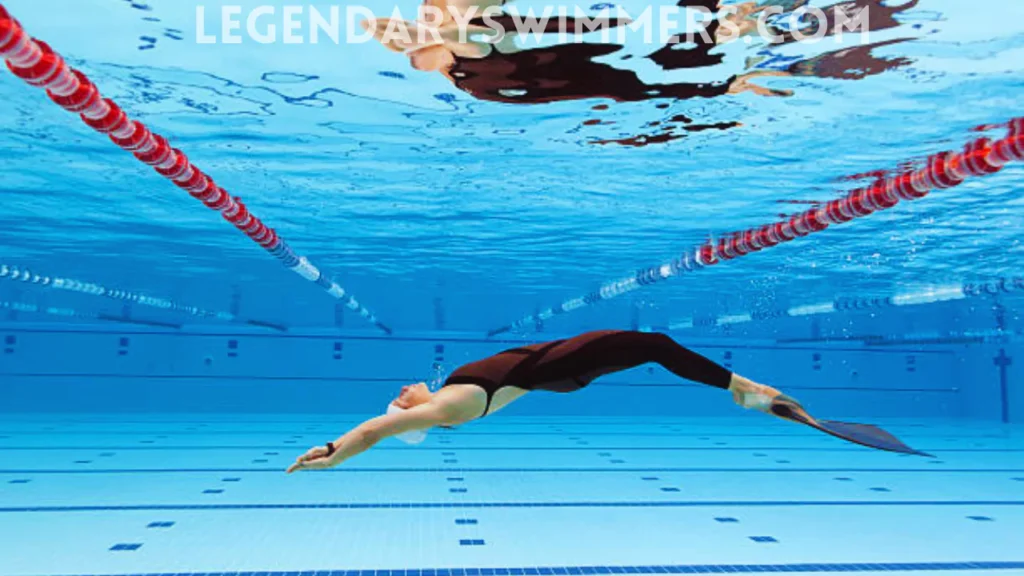
Can You Swim With Contacts In? Risks, Tips, Water Safety, and More
- Updated:
Swimming is a popular activity for many, offering both relaxation and exercise benefits. However, for those who wear contact lenses, it can raise a pressing question: Can you swim with contacts in? This seemingly simple question holds a lot of importance, especially for those who rely on contacts for clear vision but are unaware of the potential risks. Maintaining good eye health is crucial, and understanding how water impacts contact lenses can prevent long-term damage.
This article will dive deep into the potential dangers, best practices, expert insights, and recommendations for contact lens wearers who swim. It is designed for female swimmers and anyone else interested in protecting their eyes while enjoying water activities.
Why People Consider Swimming with Contacts

Most contact lens users choose to swim with their contacts out of convenience. They rely on lenses for daily activities, including swimming. Whether it’s in a pool, ocean, or lake, swimming with impaired vision isn’t ideal, so many people opt to wear their lenses. However, there’s a significant trade-off between convenience and the risks involved.
Although prescription goggles or glasses are available, many swimmers may not be aware of the risks involved in swimming with contact lenses. It’s important to understand why swimming with lenses is not recommended. By opting for prescription goggles, you can enjoy clear vision in the water while avoiding potential health hazards associated with wearing contacts or glasses when swimming. Educating swimmers about these risks helps ensure they make safer choices.
Can You Swim with Contacts Lenses?
Short Answer: No, swimming with contact lenses is not recommended.
The dangers far outweigh the convenience, and this practice can lead to severe eye infections, irritation, or even permanent damage to your vision. Water, regardless of whether it’s from a pool, ocean, or freshwater lake, contains bacteria and chemicals that can harm your eyes when trapped behind contact lenses.
Risks of Swimming with Contacts
Risk of Eye Infections
Water, especially in pools, oceans, and lakes, is full of harmful microorganisms like bacteria and viruses. One of the most dangerous is Acanthamoeba, a microorganism that can attach to the surface of your contact lenses and cause severe eye infections, such as Acanthamoeba keratitis. This infection is extremely painful, can be challenging to treat, and in some cases, may lead to blindness.
Statistics: A study published in the American Journal of Ophthalmology revealed that 85% of cases of Acanthamoeba keratitis are related to improper contact lens hygiene, including exposure to water and Irritation. Swimming in chlorinated water or salt water can dry out your contact lenses, which, in turn, dries out your eyes. Chlorine, used to disinfect pools, can cause significant eye irritation and worsen conditions like dry eye syndrome. The contact lenses can trap chemicals and irritants in your eyes, making the discomfort even worse.
Why Does Chlorine Cause Irritation?
Chlorine strips away the natural tear film in your eyes, leading to dryness and irritation. When this happens, wearing contacts exacerbates the situation by keeping the chemicals in prolonged contact with your eyes.
Risk of Corneal Damage
Swimming with contacts can also increase the risk of corneal abrasions or scratches. The cornea is the transparent front part of your eye, and if debris, bacteria, or microorganisms get trapped between the lens and the cornea, it can lead to a scratched cornea. This not only causes discomfort but can also make your eye more susceptible to infections.
Can You Wear Contacts in the Ocean, Lake, or Pool?
The short answer remains the same: no. But let’s break it down by environment:
Pool Water
While chlorinated water helps kill harmful pathogens, it still carries risks. Chlorine doesn’t completely eliminate all bacteria, and many harmful microorganisms can still thrive. Plus, the chemicals in pool water can cause discomfort and irritation when in contact with lenses.
Ocean Water
Saltwater from the ocean also poses risks. Although it may not contain as many chemicals, the salt concentration can cause dehydration of the eyes, leading to irritation and discomfort. Moreover, ocean water contains bacteria and pollutants that can cling to your contact lenses, increasing the risk of infections.
Lake Water
Freshwater lakes are some of the most dangerous places to swim with contact lenses. Since lakes are untreated, the microorganisms present are even more harmful. Acanthamoeba, in particular, is commonly found in lakes and can severely damage the cornea.
Why Are All These Environments Risky?
The common denominator is the bacteria, viruses, and other microorganisms that thrive in these waters. Your contact lenses can trap these harmful pathogens against your eye, increasing the chances of severe infections and damage.
What to Do if You Accidentally Swim with Contacts

Accidentally swimming with contacts happens, and if you find yourself in this situation, here are the immediate steps to take:
- Remove Your Contacts Immediately
The longer your contacts stay in after swimming, the higher the chance of infection. Take them out as soon as possible. - Clean or Dispose of Lenses
If you’re wearing disposable lenses, throw them away. If not, clean them thoroughly with a proper contact lens solution to remove any bacteria. - Use Eye Drops or Flush Eyes
Rinse your eyes with clean, fresh water or use lubricating eye drops to remove any potential irritants. - Seek Medical Help
If you experience persistent redness, irritation, or discomfort, consult an eye doctor as soon as possible to rule out infections.
Tips for Swimming Safely with Vision Problems
For swimmers with vision problems, there are alternatives to contact lenses that allow you to see clearly without risking your eye health.
Wear Prescription Goggles
Prescription goggles are one of the best solutions for those who need corrective lenses while swimming. They offer clear vision and protect your eyes from harmful chemicals and microorganisms.
Can You See Underwater Without Contacts?
Yes, with prescription goggles. This is the safest and most effective option for vision correction in water.
Daily Disposable Lenses
If you must swim with contacts, daily disposables are a better option. They can be discarded immediately after use, reducing the risk of prolonged exposure to harmful substances. However, it is still recommended to wear waterproof goggles over them for extra protection.
Waterproof Swim Goggles
Swimmers who wear contacts should always use waterproof goggles to create a barrier between their eyes and the water. While this reduces the risk of irritation, it does not eliminate it completely.
Alternative Vision Correction Options for Swimmers
LASIK Surgery
LASIK surgery is becoming an increasingly popular option for swimmers who want a permanent solution to their vision problems. LASIK, which stands for Laser-Assisted In Situ Keratomileusis, is a procedure that reshapes the cornea to correct refractive errors such as nearsightedness, farsightedness, and astigmatism. By altering the way light enters the eye, LASIK provides long-term, clear vision without the need for glasses or contact lenses.
Why Do Swimmers Opt for LASIK?
For swimmers, LASIK offers unmatched convenience. The ability to swim without needing contact lenses or prescription goggles means a more enjoyable and hassle-free experience. Since LASIK results in permanent vision correction, swimmers no longer need to worry about potential risks like waterborne infections associated with contact lenses.
According to a study published in Clinical Ophthalmology, over 95% of LASIK patients achieve 20/40 vision or better, with around 85% achieving 20/40 vision post-surgery. Professional swimmers and athletes have opted for LASIK due to its long-term benefits.
Dr. Brian Boxer Wachler, an ophthalmologist specializing in vision correction, states, “LASIK is an excellent option for athletes, including swimmers, as it removes the need for corrective lenses and significantly reduces the risk of eye infections from water exposure.” [Source]
Contact Lenses for Water Sports
Although LASIK is a permanent solution, some swimmers may still prefer using contact lenses. There are lenses on the market designed to be more water-resistant or marketed for water sports. However, it’s important to note that no contact lenses are completely safe for swimming.
Dr. Jack Parker, a renowned ophthalmologist, emphasizes, “There are no FDA-approved contact lenses specifically made for swimming. The risks of bacterial contamination and infections remain high, even with so-called ‘water sport’ lenses”.
Despite advancements in technology, water can still introduce harmful microorganisms that get trapped between the lens and the eye, leading to infections like Acanthamoeba keratitis. Some swimmers may use daily disposable lenses, which can be discarded after a single use. While this reduces exposure time, the best practice is still to wear protective goggles over the lenses to minimize contact with water.
Regular Eyewear vs. Contacts
Most people prefer not to undergo LASIK or wear contact lenses, making traditional eyewear a viable option. Wearing prescription glasses outside the pool and switching to protective swim goggles in the water is a safe and effective approach.
Dr. Karen Anderson, an optometrist, recommends this method to her patients, stating, “Using prescription goggles offers the best of both worlds—clear vision in the water and zero risk of contamination from waterborne bacteria.”
Prescription goggles are specially designed to be worn underwater and provide full protection against chlorine, salt, and other water contaminants. While glasses may not be suitable for swimming, they are often more comfortable and safer for everyday use outside water activities. By alternating between prescription goggles for swimming and glasses for daily use, swimmers can enjoy both clear vision and eye protection without the risks associated with contact lenses
FAQs
Can You Open Your Eyes Underwater with Contacts?
It’s not recommended to open your eyes underwater while wearing contacts. Doing so can trap harmful bacteria behind your lenses.
What Happens If You Swim with Contacts and Don’t Remove Them?
If you don’t remove your contacts after swimming, you are at high risk for infections, irritation, and corneal damage. Always take them out as soon as possible.
How Soon After Swimming Should You remove Your Contact Lenses?
Remove your contacts immediately after swimming to prevent any potential damage or infection.
Can I Swim with Contacts if I Wear Goggles?
Goggles offer some protection but are not foolproof. It’s best to avoid swimming with contacts altogether.
What Kind of Eye Infections Can You Get from Swimming with Contact Lenses?
Common infections include bacterial conjunctivitis, Acanthamoeba keratitis, and fungal infections, all of which can be severe and require medical treatment.
Final Recommendations
To protect your eyes, it’s always best to avoid swimming with contact lenses. Instead, use prescription goggles and daily disposables, or consider LASIK for long-term vision correction. By prioritizing eye health, you can enjoy swimming without the risks that come with contact lenses.
Conclusion
In conclusion, swimming with contact lenses is not worth the risk. Eye infections, irritation, and potential long-term damage outweigh the convenience of wearing contacts in the pool, ocean, or lake. For clear vision while swimming, explore safer alternatives such as prescription goggles or LASIK. If you must wear contacts, ensure that you use waterproof goggles and remove the lenses immediately after swimming.
At Legendary Swimmers, we prioritize your safety and eye health. Check out our range of swim gear, including prescription goggles and goggles designed to enhance your swimming experience while keeping you safe. Explore our products today:
 Speedo Unisex-Adult Swim Goggles Mirrored Vanquisher 2.0
Speedo Unisex-Adult Swim Goggles Mirrored Vanquisher 2.0

Natasha Nicole Leyva
Hi, I’m Natasha—swimmer, coach, and aquatic fitness enthusiast. My journey began in New Zealand after a professor recommended swimming to help with a knee injury. The low-impact nature of swimming worked wonders, and it quickly became my favorite form of exercise. This passion grew into a thriving swim academy, and soon, requests for aquatic fitness classes started pouring in. After becoming certified, I realized how powerful water workouts could be for recovery and fitness. Now, I share my expertise here to help others experience the benefits of aquatic movement—whether for recovery, fitness, or fun!

 Speedo Women’s Swim Goggles Mirrored Vanquisher 2.0
Speedo Women’s Swim Goggles Mirrored Vanquisher 2.0





